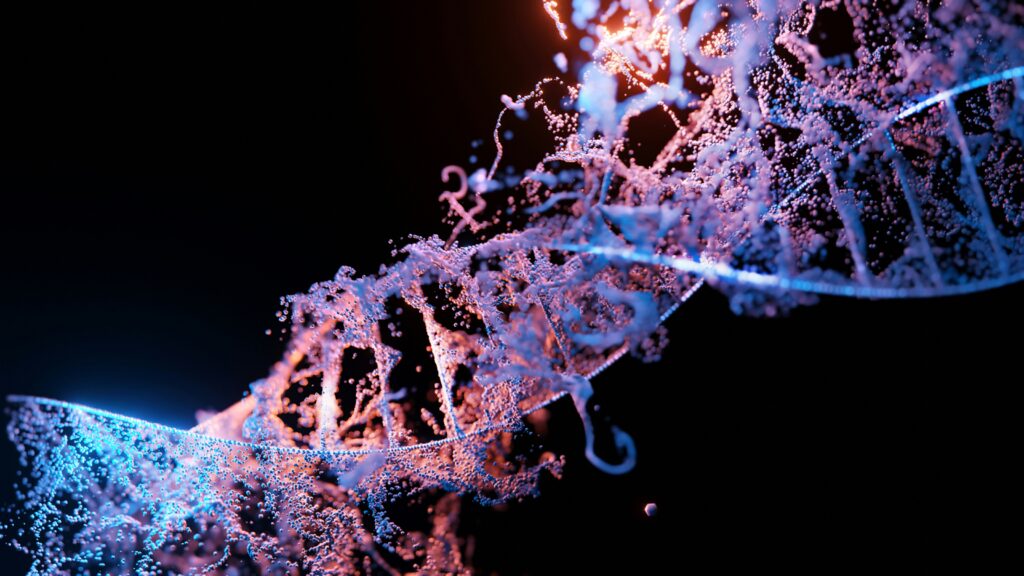CARDASSIA PRIME — Over the two decades following the relief efforts after the Dominion War, Cardassia’s healthcare system has made significant advancements. However, a recent discovery has revealed a troubling situation that demands urgent attention and casts a shadow over the planet’s recovery.
During a joint scientific endeavour between Cardassian and Federation medical researchers, it was discovered that some materials used in the reconstruction efforts across the Cardassian Union contain a chemical compound with adverse effects on Cardassian hybrids. This compound is causing a genetic mutation in the lung tissue of Cardassian hybrids, leading to the development of lesions and nodules.
The chemical compound responsible for the genetic mutation has been identified as Xenozym-17, a synthetic polymer commonly used in construction materials. One of the repeating subunits of Xenozym-17 interacts with specific genes unique to Cardassian hybrids, triggering a complex reaction within the genetic structure of their lung tissue, resulting in the formation of lesions and nodules. The precise mechanism by which the monomers induce these genetic changes is still under investigation, but initial findings suggest that it disrupts the regulatory pathways responsible for maintaining the integrity of the lung tissue.
Understanding Xenozym-17
Xenozym-17 is a synthetic polymer designed for its durability and flexibility, making it a popular choice in construction materials. Its molecular structure includes a repeating subunit known to interact with organic tissues in unique ways. In Cardassian hybrids, these interactions are problematic due to a specific genetic marker not found in purebred Cardassians or other species. This marker appears to act as a binding site for the Xenozym-17 subunits, initiating a cascade of biochemical reactions that alter the genetic expression within lung cells.
Genetic Mutation Mechanism
The genetic mutation induced by Xenozym-17 involves several steps:
- Binding to Genetic Markers: The subunits of Xenozym-17 bind to the genetic markers unique to Cardassian hybrids.
- Disruption of Regulatory Pathways: This binding disrupts the normal regulatory pathways that control cell growth and repair in lung tissue.
- Formation of Lesions and Nodules: The disruption leads to uncontrolled cell proliferation and the formation of lesions and nodules. These growths compromise lung function and lead to respiratory issues.
Medical and Healthcare Implications
The lesions and nodules, though treatable, have placed a considerable burden on the state and the healthcare system, as tracking down those affected proves to be a complex and resource-intensive task. Current treatments involve a combination of surgical removal of nodules and lesions, and genetic therapies aimed at reversing the mutation caused by Xenozym-17. However, these treatments are not universally effective and require ongoing research to improve their efficacy.
Recognizing the gravity of the situation, the Cardassian government has formally requested aid in researching the disease and providing treatment. However, the delicate nature of the matter has introduced diplomatic complications, with concerns that offering assistance could be interpreted as an admission of guilt by those involved in the procurement of construction materials.
Diplomatic and Research Efforts
Currently, discussions are underway to ensure that any assistance provided respects the sovereignty of the Cardassian Union while addressing the urgent healthcare needs of those affected. Federation scientists are collaborating with Cardassian researchers to develop more effective treatments and to devise strategies to identify and mitigate the effects of Xenozym-17 exposure.
Ongoing Research
Researchers are exploring several avenues to combat the effects of Xenozym-17, including:
- Genetic Editing: Using advanced CRISPR technology to remove or repair the damaged genes in affected individuals. CRISPR (Clustered Regularly Interspaced Short Palindromic Repeats) is a powerful tool that allows precise targeting and editing of specific genetic sequences, making it possible to correct the mutations caused by Xenozym-17.
- Polymer Analysis: Developing new materials to replace Xenozym-17 in construction, ensuring they do not pose similar risks.
- Preventative Measures: Identifying individuals at risk through genetic screening and monitoring environmental levels of Xenozym-17 to prevent further exposure.
Historical Context
It is noteworthy that more than two decades after the end of the Dominion War, the wounds of the conflict persist, not only in the memories of the Cardassian people but also in the physical ailments that now afflict their hybrid population. Negotiations are ongoing to ensure that any assistance provided respects the sovereignty of the Cardassian Union while addressing the urgent healthcare needs of those affected.
This historic discovery and the subsequent research efforts mark a significant step in understanding the long-term impacts of post-war reconstruction on diverse populations, highlighting the need for vigilance and adaptability in rebuilding efforts.
Comments
comments

